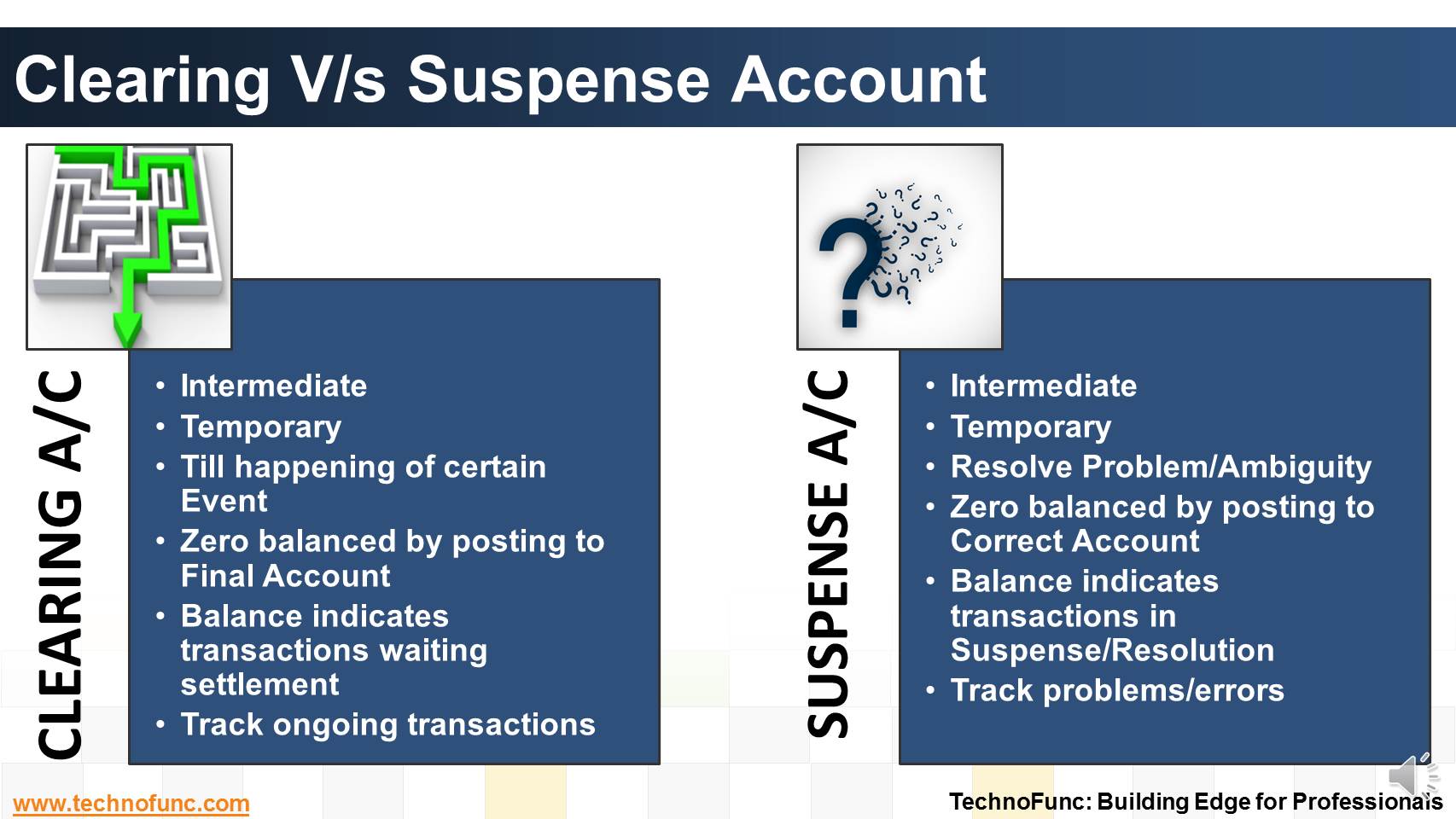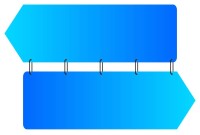- Home
- Business Processes
- Industry Knowledge
- Aerospace Industry
- Automotive Industry
- Banking Domain
- BFSI Industry
- Consumer/ FMCG Industry
- Chemicals Industry
- Engineering & Construction
- Energy Industry
- Education Domain
- Finance Domain
- Hospitality Domain
- Healthcare Industry
- Insurance Domain
- Retail Industry
- Travel and Tourism Domain
- Telecom Industry
- Leadership Skills
- eLearning
- Home
- Business Processes
- Cash Management
- Clearing V/s Suspense Account
Clearing V/s Suspense Account
Suspense and clearing accounts resemble each other in many respects but there exists important fundamental difference between the two. Read more to explore these differences.
Suspense and clearing accounts resemble each other in many respects but there exists one important fundamental difference.
Both are temporary accounts. Transactions are entered and finally transferred to the appropriate account.
Suspense and clearing accounts have entirely different functions.
Clearing accounts are used to hold transactions for later posting and ensure information is recorded correctly and completely.
A suspense account is used when there appears to be a problem. It serves to record an amount until the problem is resolved.
Both suspense and clearing accounts are "zeroed out" periodically. This means everything in an account is moved to other accounts, leaving a zero balance.
Suspense A/c is used for tracking Uncertainties – to hold transactions when there is some ambiguity involved.
For example, customer has deposited payment in the bank account and you are unable to identify the customer from available information,
You can put the transaction in a suspense account until you determine where it belongs.
Whereas Clearing Accounts are used for tracking transactions on a temporary basis until it's time to post them to a more permanent account.
Taking the same example, now the customer has sent payment against many outstanding invoices and you know it belongs to a particular customer but not to which invoice.
This may be parked in a clearing account until the confirmation is received from customer and amount applied to correct invoice.
Just to keep track of correct outstanding past due invoices.

Related Links
You May Also Like
-
Complete Bank Reconciliation Process
Bank Reconciliation Process is a eight step process starting from uploading the Bank Statement to finally posting the entries in General Ledger. Learn the Eight Steps in Detail!
-
In the previous article we talked about the meaning of the account reconciliations. Now as you now the definition of account reconciliation, in this article let us see why it is carried out.
-
The objective of Financial risk management is to protect assets and cash flows from any risk. Treasury function works to accurately assess financial risks by identifying financial exposures including foreign exchange, interest rate, credit, commodity and other enterprise risks. Learn about the various risks that are managed by treasury.
-
Cash Clearing – Accounting Entries
The Cash Clearing process enables you to track amounts that have actually cleared your bank. Learn the steps and accounting entries that gets generated during the cash clearing process.
-
The Cash Management component ensures that the enterprise has sufficient liquidity for payments that are due and to monitor payment flows. Learn how treasury plays an important role in cash management for the enterprise.
-
In automated clearing, Bank statement details are automatically matched and reconciled with system transactions. Learn how this process works and what are the perquisites to enable the same.
-
The terms Treasury Management and Cash Management are sometimes used interchangeably, while, in fact, the scope of treasury management is larger and includes funding and investment activities as well. Learn all about Treasury Management here!
-
The Cash Clearing process enables you to track amounts that have actually cleared your bank. Till reconciliation happens the amounts are parked in 'Cash Clearing Account'.
-
Treasury Management - Benefits
Effectively using treasury management with cash management and trade finance products brings tangible benefits to both corporates and financial institutions. Let us discuss some tangible benefits of treasury function.
Explore Our Free Training Articles or
Sign Up to Start With Our eLearning Courses

About Us
Learning
© 2023 TechnoFunc, All Rights Reserved











